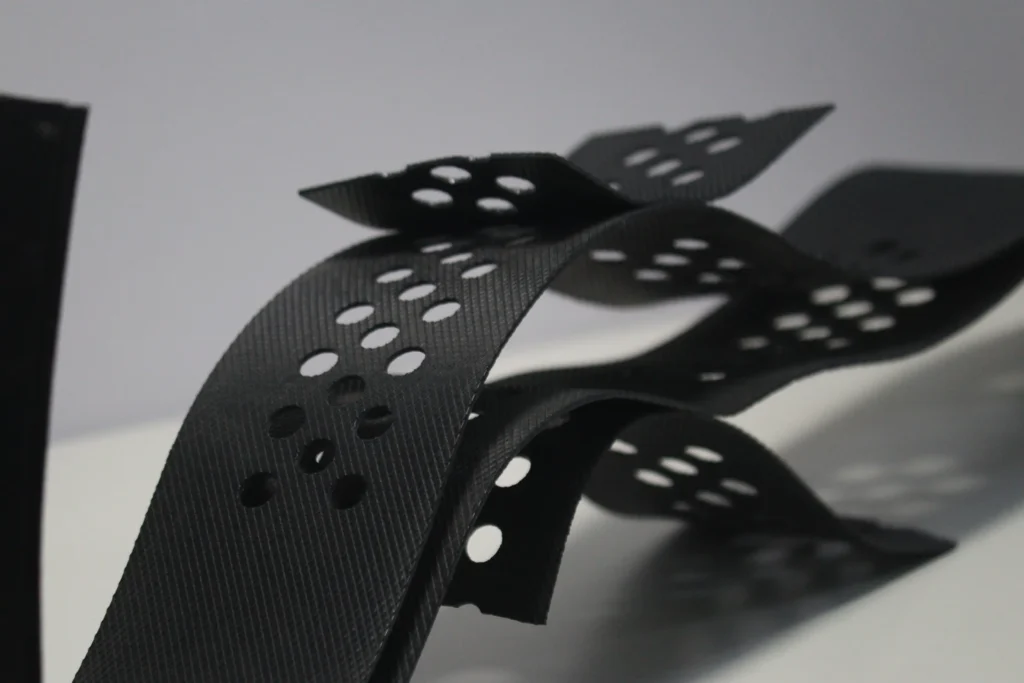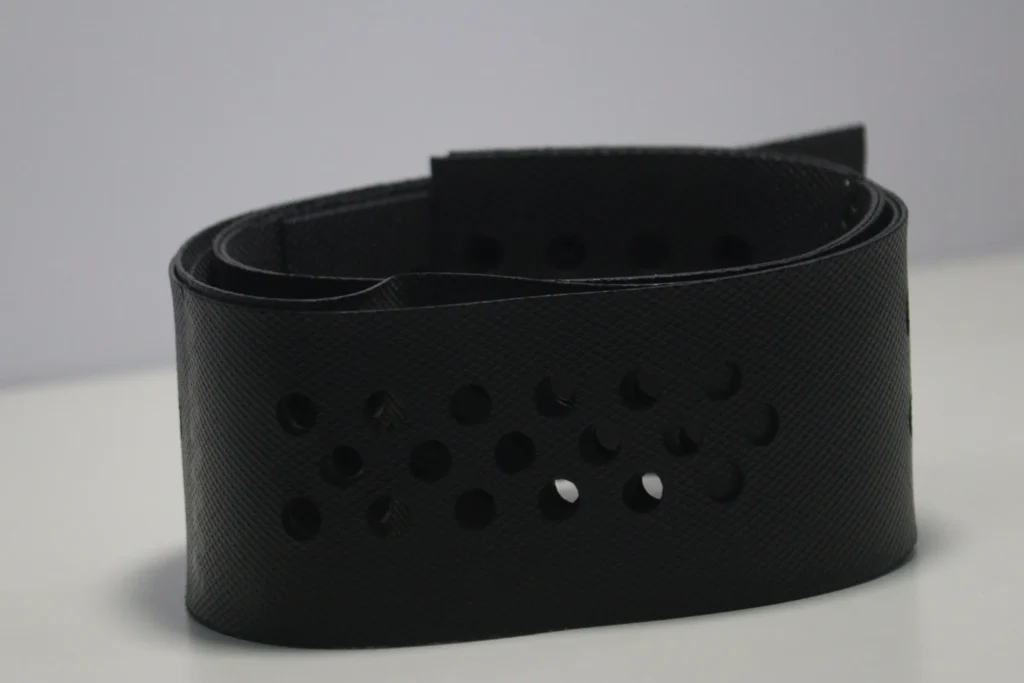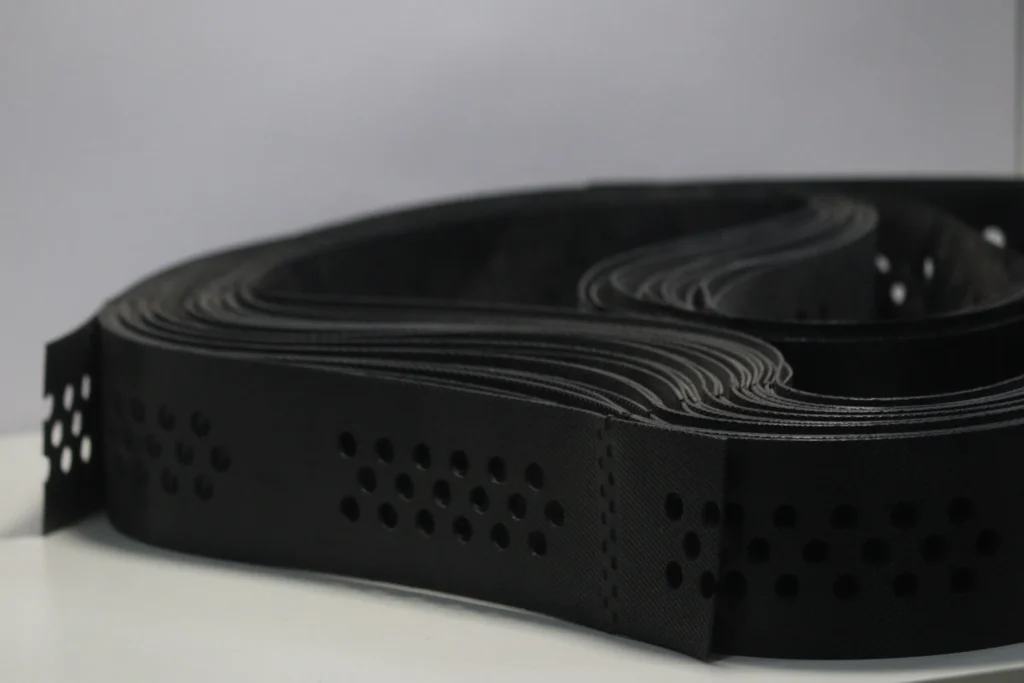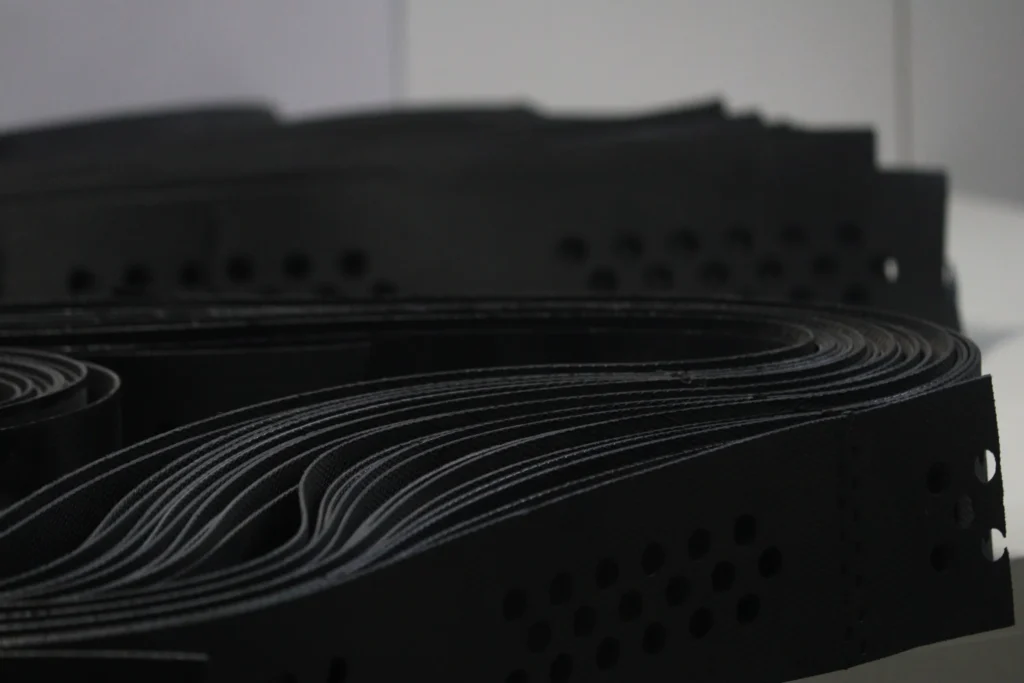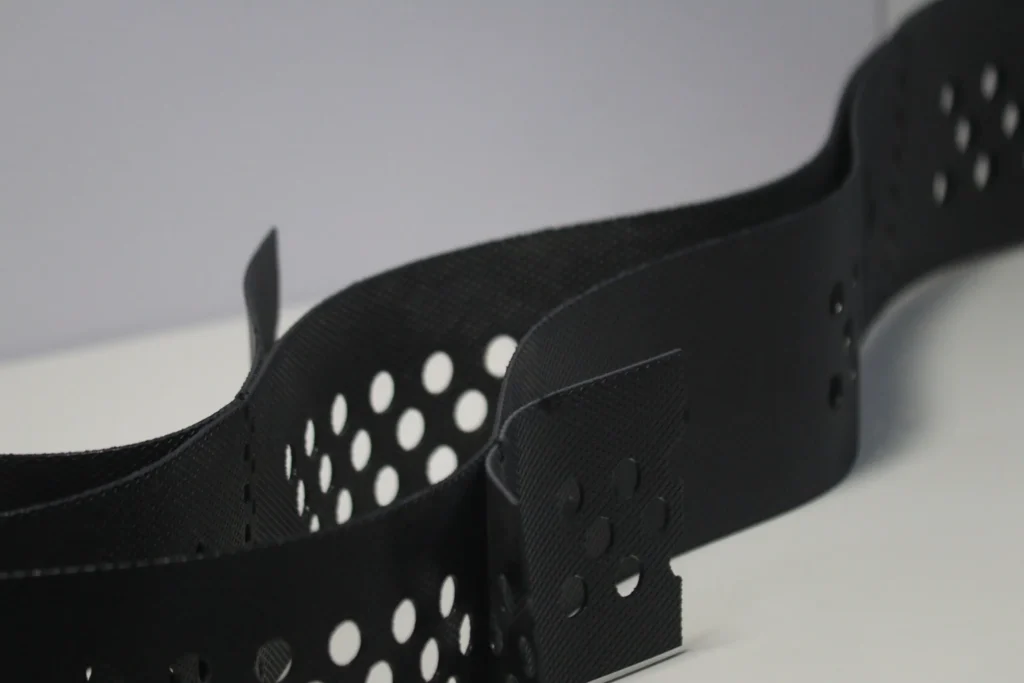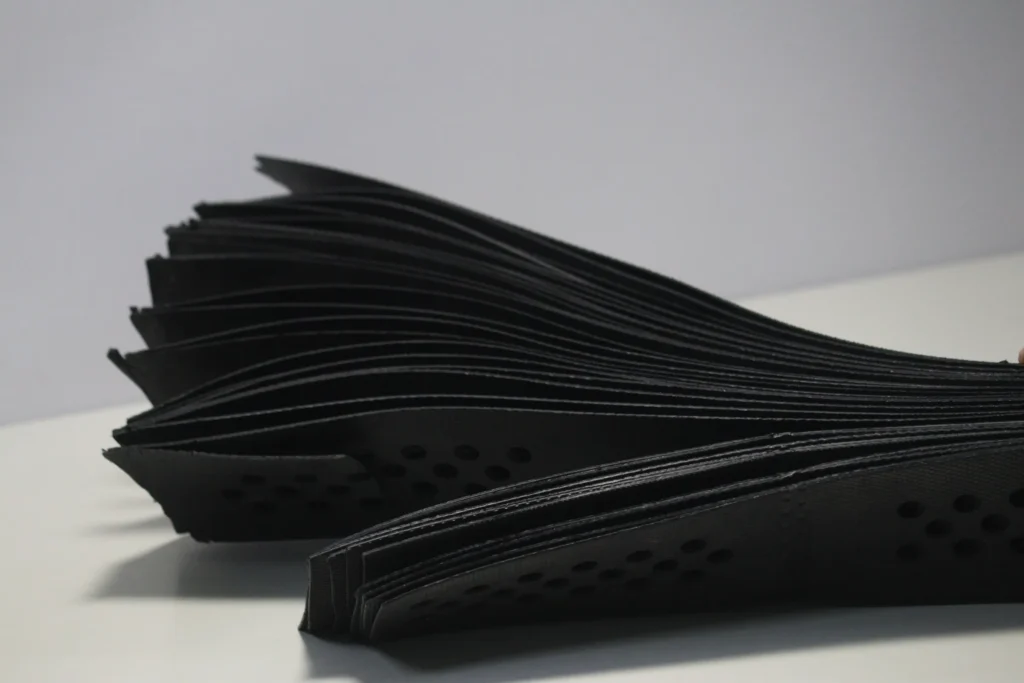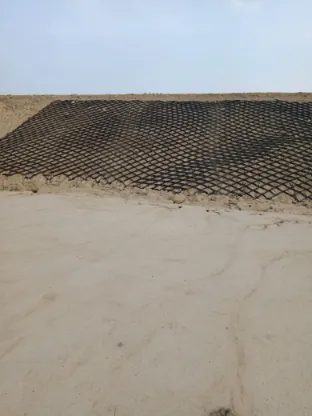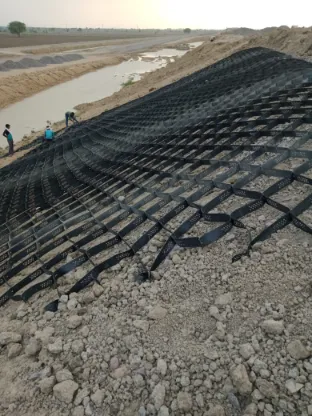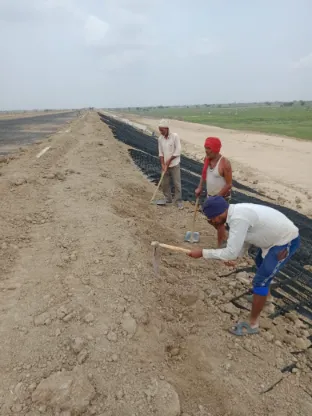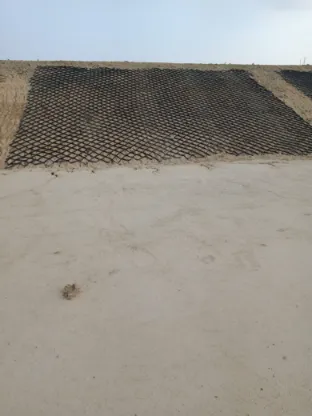Geocells

Ocean Global’s Geocell technology is an indispensable part of the civil engineering and transportation industry. We are the leading Geocells Manufacturers in India that meet the evolving needs across various sectors obliterating higher costs. They are in high demand owing to the rapid infrastructure and road developments around the globe.
Table of Contents
What are Geocells?
Geocells are cellular confinement devices that were developed as simple and long-lasting materials for stabilizing and protecting the environment. Cellular confinement methods successfully preserve the compaction of the soil, resulting in a stronger structure for both the infill and the pavement. The Geocell’s three-dimensional honeycomb shape ensures its strength and durability. This format establishes a framework for better load distribution.
The cell is built of high-density polyethylene (HDPE), which is used to stabilize soil that is weak or unstable. This is due to their capacity to minimize soil particle lateral movement while vertically loading on the enclosed infill.
Geocells give a mattress effect and improve the flexibility of the materials in addition to providing stability. The cells have high elastic stiffness and tensile strength, and as a result, they increase the product’s load distribution.
Less rutting occurs in the surface materials above due to the weight distribution created by the cells. This also cuts down on the amount of granular infill required. The design of the cells allows for infill to be imported locally, allowing for the use of marginal soil as an infill.
Finally, Geocells increase the product’s asphalt layers, which has numerous advantages. The primary benefit is the possibility to use less asphalt because the cells last longer than ordinary asphalt. Second, Geocells increase the modules of adjacent levels by transferring vertical stresses to the geocell grid via passive resistance. The ability to employ Geocells saves a lot of money in the base and subbase layers, which has a direct impact on user upkeep and costs.
History of Geocells
During the late 1970s and early 1980s, engineers developed Geocells to protect and stabilize varied ground conditions around the world. The application of Geocells in the early stages of development was very different from what we see today. It was originally designed to help strengthen sand roads so that military-grade vehicles could be transported.
Geocells were made primarily of recyclable materials such as wax-coated art paper, plastic drainage pipes, and staples in their early designs. Because of their immediate requirement in countries like the Middle East, where the US military began operating in war zones, geocells were swiftly enhanced.
Presto Products, a plastics producer, was contacted later by the US Army. They collaborated to design a stronger grid that could support considerably more weight for military uses. The initial Geocells were put to the test in Florida by constructing sand roads out of the material, while the newer Geocells were put to the test by allowing several automobiles to pass across their temporary road. The cells exhibited no symptoms of distress despite being surrounded by a large number of military-grade vehicles.
This did not, however, lessen the need for cell enhancement. As the demand for Geocells grew, the product got more developed, largely for larger projects and less for civilian use. Geocells have gained a lot of popularity in a lot of other fields outside of the military since the 1980s because of their amazing design.
What are Geocells used for?
Because of their propensity to expand, geocells are highly effective for compacting materials inside. This extension creates a free-draining system that yet prevents mass movements that are impossible to prevent with other construction materials and procedures.
Ocean Geocells are versatile and multi-functional because to their high-quality design. One of the most common applications is for structural protection. Large firms, for example, use the cells as protective linings for hydraulic structures and many types of industrial equipment.
The protection and stabilization of steep slope surfaces is another wonderful application for the cells. In mountainous places, geocells are used not just to stabilize the ground, but also to strengthen and extend the life of highways.
Geocells can also be used to increase static and dynamic load support on subgrade level soils that are poor. The Geoweb in the United Kingdom is an example of this, where the very soft sand used near the city of Kent would change. The Geocell was used to both stabilize the earth and build solid roads, which was an ideal application for it.
Multi-layered earth retaining and water retaining gravity structures are also made with them. A retaining wall in Korea, for example, was built with the primary goal of preventing erosion caused by severe weather in cities along the wall.
What are Geocells made of?
Geocell panels are expandable three-dimensional panels constructed of high-density polyethylene (HDPE), polyester, or another polymer substance. The connecting strips form the walls of a flexible, three-dimensional cellular structure into which specified infill materials are put and compacted when expanded during installation. This generates a free-draining system that keeps infill materials in place and inhibits mass movement by using tensile reinforcement to constrain them. Soils and aggregate infill materials benefit from cellular confinement systems in terms of structural and functional performance.
Sector
Civil engineering, landscaping, railways, roadways, slopes and walls, mining, coastal, ports, Ports & aviation.
Function
Stabilization and reinforcement.
Salient Features
- A cost-effective alternative in the construction industry.
- Increased overall structural strength.
- Better bearing capacity.
- Wider stress distribution.
- Reduced permanent deformation.
- It prolongs the life of the structures, whether roadways or railways.
- Highly sustainable and profitable is perhaps its foremost salient feature.
- Quick and easy installation.
- Eco-friendly soil stabilization solution.
Applications
- All surfaces of the transportation industry, including roadways, railways, airports, and waterways.
- The use of Geocells for track systems can correct surface degradation problems.
- With its erosion control properties, it finds utility to improve channel stability and reduce the impact of high-pressure water.
- Enhanced drainage owing to the perforations in the Geocells.
- Ease of transportation minimizes logistics, indirectly lowering the carbon footprint.
- Retaining walls with Geocells help stabilize steep slopes. The Geocells not just hold the soil in place but also enable drainage.
- It ensures the long-term stability of slopes.
- Geocells are also resourceful in reservoirs and landfill areas.

